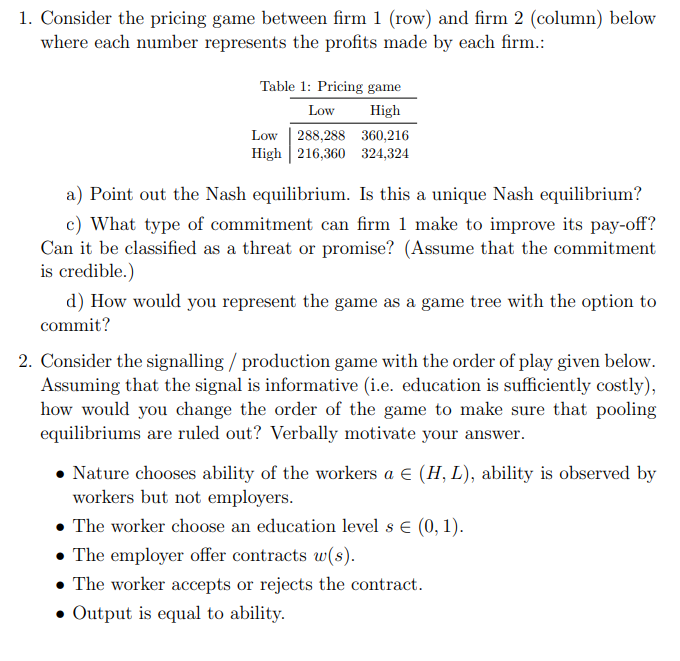Consider the pricing game between firm 1 (row) and firm 2 (column) below where each number represents the profits made by each firm.: Table 1: Pricing game Low High Low 288,288 360,216 High 216,360 324,324 a) Point out the Nash equilibrium. Is this a unique Nash equilibrium? c) What type of commitment can firm 1 make to improve its pay-off? Can it be classified as a threat or promise? (Assume that the commitment is credible.) d) How would you represent the game as a game tree with the option to commit?
1. Consider the pricing game between firm 1 (row) and firm 2 (column) below
where each number represents the profits made by each firm.:
Table 1: Pricing game
Low High
Low 288,288 360,216
High 216,360 324,324
a) Point out the Nash equilibrium. Is this a unique Nash equilibrium?
c) What type of commitment can firm 1 make to improve its pay-off?
Can it be classified as a threat or promise? (Assume that the commitment
is credible.)
d) How would you represent the game as a game tree with the option to
commit?
2. Consider the signalling / production game with the order of play given below.
Assuming that the signal is informative (i.e. education is sufficiently costly),
how would you change the order of the game to make sure that pooling
equilibriums are ruled out? Verbally motivate your answer.
• Nature chooses ability of the workers a ∈ (H, L), ability is observed by
workers but not employers.
• The worker choose an education level s ∈ (0, 1).
• The employer offer contracts w(s).
• The worker accepts or rejects the contract.
• Output is equal to ability.

Trending now
This is a popular solution!
Step by step
Solved in 5 steps with 3 images









